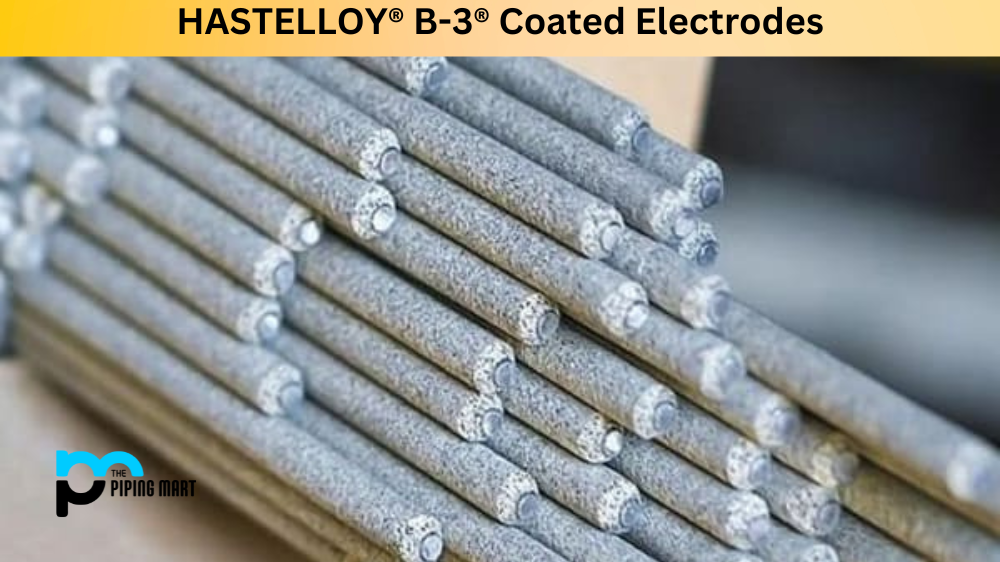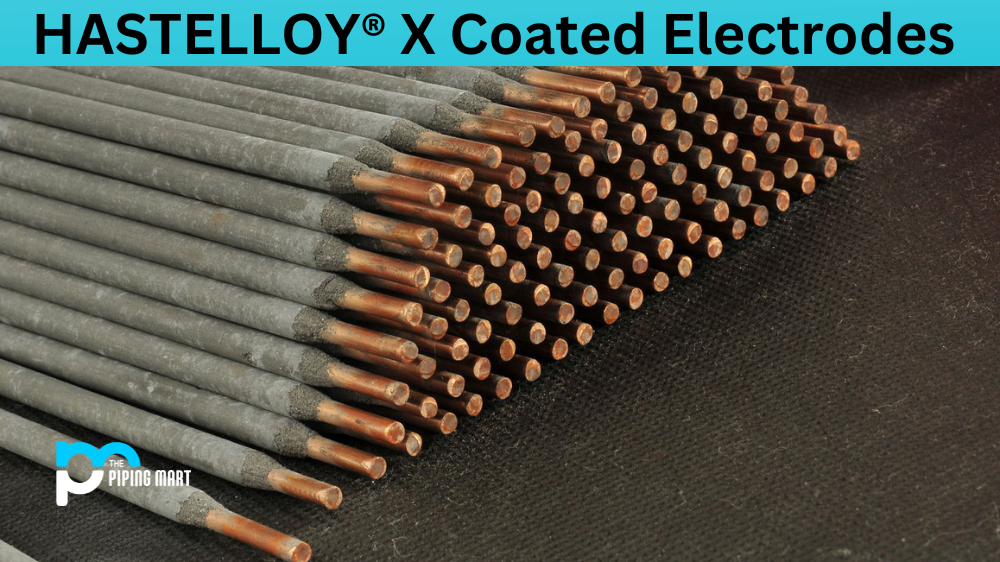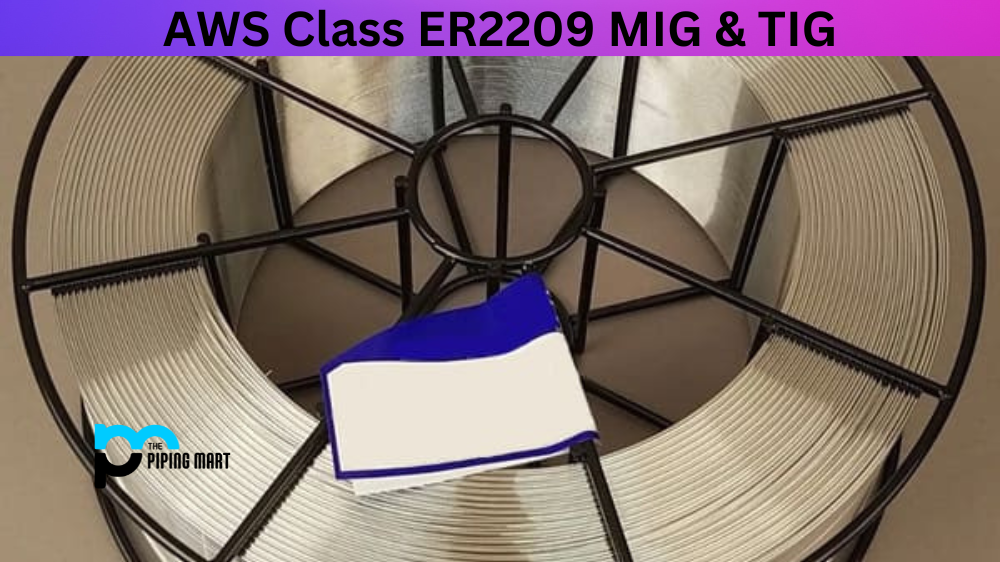When welding and joining high-performance alloys, HASTELLOY® B-3® Coated Electrodes are among the most popular choices. These electrodes are specifically designed for welding and fabrication of HASTELLOY® B-3® alloy. HASTELLOY® B-3® Coated Electrodes are known for their excellent weldability, mechanical and physical properties, and corrosion resistance. In this blog, we will discuss in detail the composition, mechanical and physical properties, uses, corrosion resistance, and heat treatment of HASTELLOY® B-3® Coated Electrodes.
What are HASTELLOY® B-3® Coated Electrodes?
HASTELLOY® B-3® Coated Electrodes are special corrosion-resistant electrodes used in various welding applications. These electrodes provide superior resistance to the pressure and high-temperature environments commonly encountered during welding operations. They are especially suitable for welding Hastelloy B, C, and other nickel base alloys with similar compositions. The unique formulation of these Hastelloy electrodes provides excellent property retention even at elevated temperatures, making them an ideal choice for use in welds exposed to aggressive conditions. With outstanding arc stability, low spatter levels, smooth running characteristics, and exceptional corrosion performance, HASTELLOY® B-3® Coated Electrodes offer a reliable long-term solution to your welding needs!
HASTELLOY® B-3® Welding Electrodes Composition
The composition of HASTELLOY® B-3® Electrodes is crucial in determining their properties and performance. These electrodes contain nickel, molybdenum, iron, and chromium constituents. Other minor elements, including carbon, silicon, and manganese, are also in traces. HASTELLOY® B-3® Coated Electrodes have a low carbon content, which improves their corrosion resistance and other properties.
| Nickel: | Balance |
|---|---|
| Molybdenum: | 27.0-32.0 |
| Iron: | 1.0-3.0 |
| Chromium: | 1.0-3.0 |
| Cobalt: | 3.0 max. |
| Tungsten: | 3.0 max. |
| Manganese: | 2.0 max. |
| Copper: | 0.50 max. |
| Other: | 0.50 max. |
| Silicon: | 0.20 max. |
| Carbon: | 0.02 max. |
| Sulfur: | 0.03 max. |
| Phosphorus: | 0.04 max. |
HASTELLOY® B-3® Coated Electrodes Mechanical Properties
HASTELLOY® B-3® alloy exhibit excellent mechanical properties, making them suitable for welding, joining, and fabrication. These electrodes’ ultimate tensile strength, yield strength, and elongation are higher than those of other alloys. HASTELLOY® B-3® Coated Electrodes are also tough and flexible, making them ideal for harsh environments.
| Tensile (psi) | 100,000 |
|---|---|
| Mpa | 690 |
| Elongation (%) | 25 |
HASTELLOY® B-3® Welding Electrodes Physical Properties
In addition to their mechanical properties, HASTELLOY® B-3® wire exhibit excellent physical properties. These electrodes’ electrical resistivity, thermal conductivity, and melting point are higher than those of other alloys. HASTELLOY® B-3® Coated Electrodes also have a low thermal expansion coefficient, making them resistant to thermal stress and deformation.
| Density | g/cm3 | 9.22 | |
|---|---|---|---|
| lb/in.3 | 0.333 | ||
| Melting Range | °F | 2500 – 2585 | |
| °C | 1370 – 1418 | ||
HASTELLOY® B-3® Coated Electrodes Trade Names
| Class | UNS | Haynes |
| ENiMo-10 | W860675 | HASTELLOY® B-3® |
HASTELLOY® B-3® Welding Electrodes Uses
HASTELLOY® B-3® Electrodes find widespread use in various industries, including chemical, petrochemical, and aerospace. They are commonly used for welding and joining HASTELLOY® B-3® alloy, known for their outstanding resistance to corrosion and other harsh conditions. HASTELLOY® B-3® Coated Electrodes are also used for fabricating heat exchangers, pressure vessels, and other high-performance equipment.
HASTELLOY® B-3® Coated Electrodes Corrosion Resistance
One of the major benefits of using HASTELLOY® B-3® filler wire is their exceptional corrosion resistance. These electrodes are highly resistant to corrosion from various chemicals, including sulfuric acid, hydrochloric acid, phosphoric acid, and nitric acid. They also exhibit good resistance to pitting and crevice corrosion, making them ideal for harsh marine and chemical environments.
HASTELLOY® B-3® Welding Electrodes Heat Treatment
HASTELLOY® B-3® filler metal do not require any specific heat treatment after welding or fabrication. However, if necessary, stress-relieving heat treatment can be performed to improve the mechanical properties of the fabricated parts. The recommended heat treatment temperature for stress relief ranges from 595°C to 760°C.
Conclusion
HASTELLOY® B-3® Coated Electrodes are an excellent choice for welding and joining HASTELLOY® B-3® alloy. They exhibit exceptional mechanical and physical properties, making them ideal for harsh environments. These electrodes are highly resistant to corrosion from various chemicals, making them a popular choice in various industries. If you are looking for high-performance electrodes with excellent properties and corrosion resistance, consider using HASTELLOY® B-3® Coated Electrodes for your welding and fabrication needs.
Meet Heer, a dynamic and driven writer learning tricks of her trade in the metal industry. With a background in Digital Marketing, Heer brings a unique perspective to her writing, sharing valuable insights. Apart from blogging she like reading and hiking.




